This guide on how to plan a trip to Spain is designed to help you decide which cities you should add to your itinerary, when you should go and how long you should stay.
We spent 6 weeks exploring Spain in 2016 and in 2019 Charles spent another 7 weeks walking the Camino. It’s a country we love and think everyone should experience given the chance.
Spain is a destination that has dazzled visitors for centuries. A long and tumultuous past resulted in many groups have left their mark on the country, meaning each of the cities and regions is distinct – and fascinating.
There are, however, a few threads that link all of Spain together. There’s a love for the good things in life, like fine wine, delicious food and beautiful art. Then there’s a certain joyfulness that is expressed through festivals, events and just everyday life.
Undoubtedly, whether you’re in the heart of metropolitan Barcelona, the remote stretches of the Camino or the beaches of Malaga, there’s something just so magical about Spain.
What you will find here
Why choose to travel to Spain?
Spain is a country that sits atop many people’s ‘must-see’ lists – and it’s no surprise. The country boasts nearly everything you could wish for in a destination, all wrapped up in a neat – and vivacious – package.
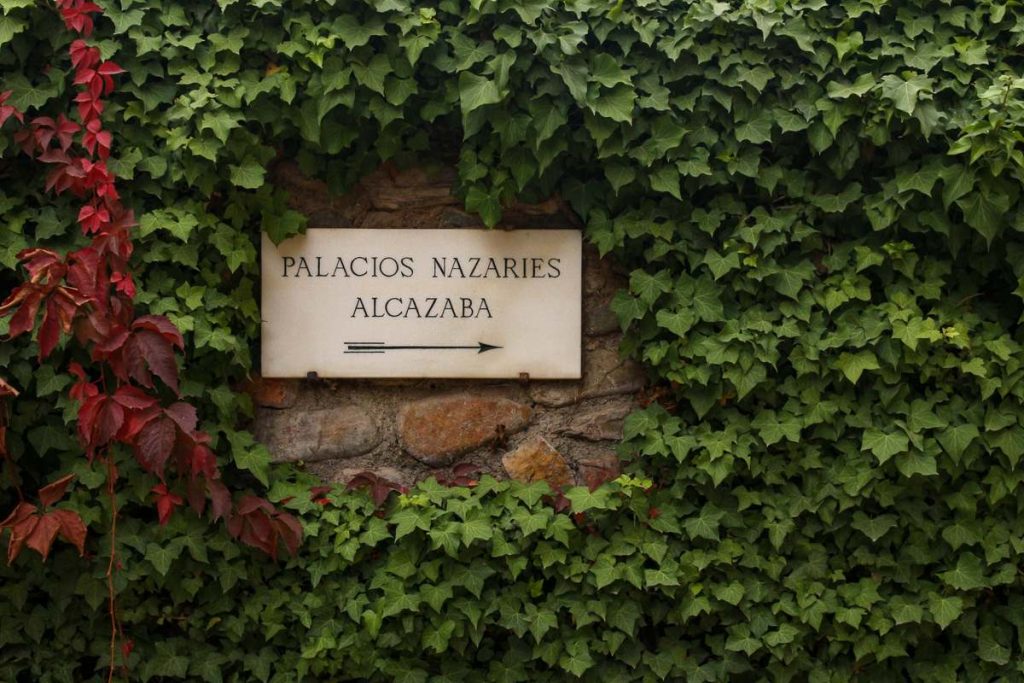
The Spanish enjoy a true enthusiasm for life, and with such beautiful surrounds, it’s easy to see why. Diverse and bustling cities are hotspots for lovers of arts, culture and fine food, while dazzling beaches and islands are the perfect places to escape the hustle and bustle.
Lovers of architecture and history are sure to also be enraptured by Spain, with its abundance of UNESCO World Heritage sites including castles, cathedrals, aqueducts and more.
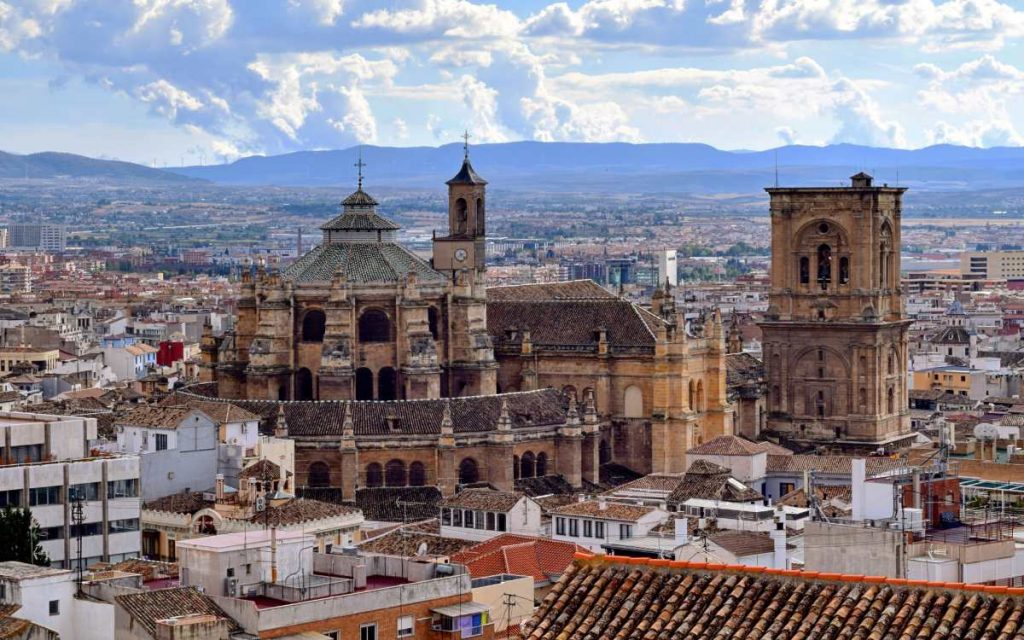
While Spain is a brilliant destination at any time, a full calendar of events and festivals add even more reason to visit. From the kooky fun of La Tomatina to the romance of Sant Jordi Day, there’s almost always a special something happening somewhere in Spain.
Related: Discover UNESCO sites in Spain
Language
Most people will have no trouble identifying Spanish as the predominant language in Spain, and speaking a few words is certainly helpful! While many Spanish people – and particularly those in the tourism industry – do speak English, it’s helpful to have a few phrases up your sleeve. Plus, Spanish people will usually go to great lengths to understand what you’re trying to say; so, there’s no need to worry if your español is not perfecto.
Although Spanish is spoken pretty much universally throughout the country, in Barcelona (and the rest of Catalonia), most people’s preferred tongue is Catalan. No-one will begrudge you for speaking in Spanish, however, a few words of Catalan are sure to elicit delight from proud locals.
Travel costs in Spain
Like its neighbours, Spain uses the euro so there’s no need to change money if you’re coming from the eurozone.
Overall, Spain is a relatively affordable country to visit, especially if you are coming from neighbouring France where it’s a noticeable step down in price. Things are more expensive in the cities, but overall mainland Spain presents very good value for money.
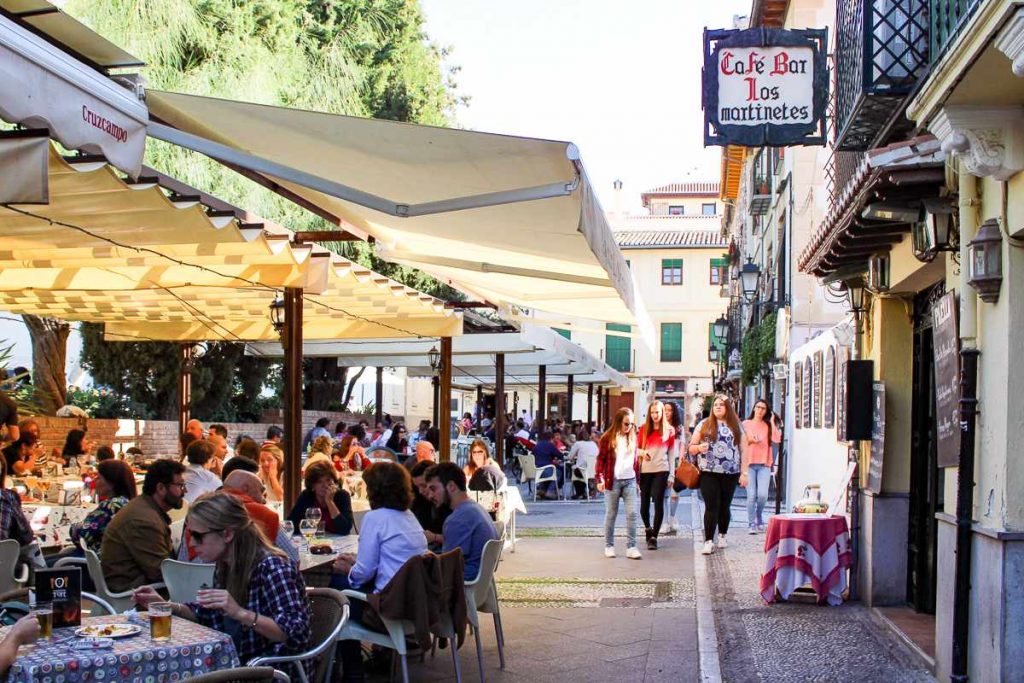
It also offers a great variety of options to suit all budgets. From simple lodgings like hostels and guesthouses to beautiful luxury hotels, you’ll easily find something that fits your needs.
Things do tend to be a little more expensive on the islands. This is especially true of Ibiza, which is generally a playground for those who enjoy the fine things in life – and don’t mind paying for them. That said, even on Ibiza, budget options can be found.
As travel costs do vary a little from region to region, it’s hard to list travel costs exactly. However, some common travel costs are listed below to give you a general idea:
- Accommodation: From €10 (dorm room), €75 (mid-range), €150+ (luxury)
- Lunch: €5 (simple or self-catering), €15 (local restaurant), €25+ (fine dining)
- Beer/wine: local varieties from €1.50 and up.
- Attractions: entrance to La Sagrada Familia, €17 for an adult
- Car hire: from €25 per day
Getting into and around Spain
Spain’s West Europe location means that it’s easily connected to other cities by air and rail.
Travelling to and around Spain by train is a popular way to explore the country. Not only is it easy to reach Spain from nearby France, but the rail network also links up most of the country. Many of the lines are high-speed, meaning that train travel in Spain is both fast and comfortable. For example, the 620-kilometre trek between Madrid and Barcelona takes just 1.5 hours by the highspeed train.
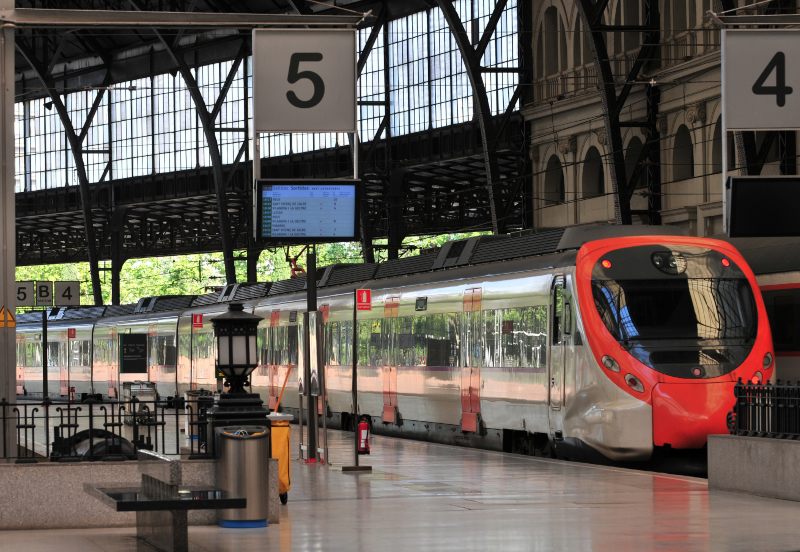
Flying into Spain is a sensible choice if you’re visiting from further afield. There are also numerous domestic flights which can reduce travel times and allow you to get around the country easily. For those travelling on a budget, buses are slower but can save you a lot of money.
Another option for travelling throughout Spain is to hire a car. This will give you access to pretty much the entire country, and the condition of the roads is generally good. Just be prepared for some tolls and brush up on your Spanish road signs, and it’s a great way to explore the country.
Places to visit in Spain on your first trip
The hardest part about visiting Spain is narrowing down which parts will make your itinerary. There are just so many amazing places dotted all over the country – but here are some of the very best.
3 days is a minimum and 5 days is ideal – that is our motto when travelling and it certainly is our recommendation when planning your Spanish itinerary. Less is more, give yourself time to eat and drink everything!
This post may contain affiliate links. If you book via these links, we may make a small commission at no extra cost to you.
Madrid
Spain’s capital is regal and beautiful, yet it has a vibrancy and joy for life that makes it a true joy to visit. If exploring the stunning streets and huge parks doesn’t leave you with sore feet, the salsa dancing surely will! In Madrid, there’s no escaping the fiesta.
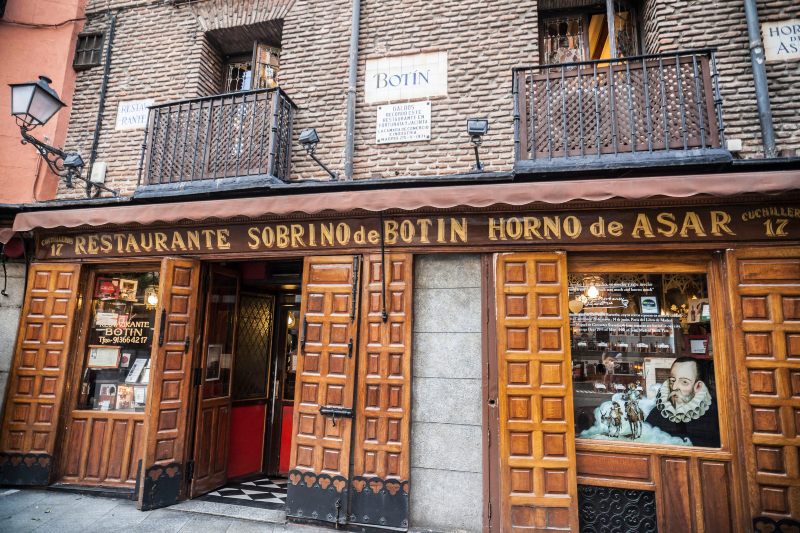
Madrid certainly is an all-day and all-night kind of place, so you will certainly never find yourself without options of what to do. Sprawling Madrid’s diversity means that whether you’re a foodie, history buff, art lover or wine enthusiast, you’re sure to find plenty that’s right up your alley.
As much as we loved Barcelona we fell under the spell of Madrid. Our 5-day stay was too short and we will be back!
Don’t miss
- The Royal Palace, an incredibly grandiose building that is Europe’s largest functioning Royal palace.
- A day trip to stunning Toledo, a beautifully preserved Medieval city. The whole historic centre is UNESCO World Heritage Listed.
- El Retiro, a beautiful and expansive park that’s a perfect break from the concrete jungle, if you need it!
Related: Best experiences in Madrid
Barcelona
There are some cities that you explore slowly and gently – and then there’s Barcelona. It’s the kind of place that grabs you immediately, tempting you to dance salsa, drink sangria and live the good life.
With fabulous festivals, fascinating architecture and brilliant foodie hotspots, it’s no wonder that Barcelona is considered one of the world’s great cities.
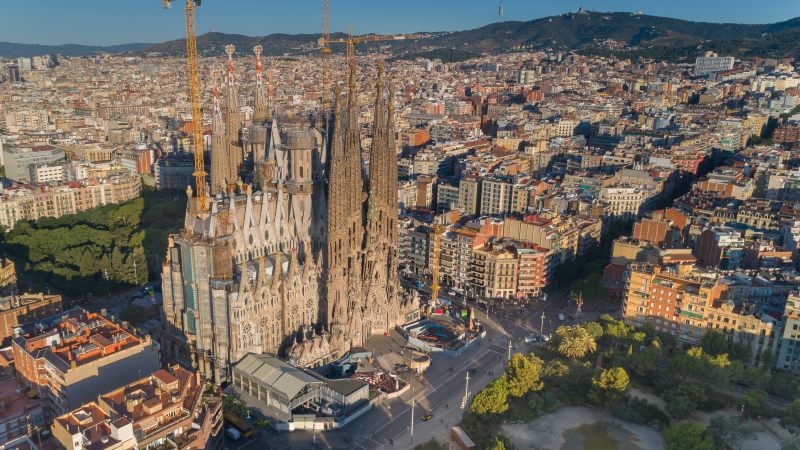
Plus, as the capital of the fiercely proud and independent Catalonia region, Barcelona has quite a different feel than elsewhere in Spain. Don’t be surprised if you don’t get much sleep in Barcelona: there’s much to explore and experience.
Don’t miss
- La Sagrada Familia, Antoni Gaudi’s famously unfinished surreal Church. This UNESCO World Heritage Site is an incredible sight to behold.
- Las Ramblas, possibly the busiest street in the world. Filled with buskers, shops, restaurants and lots and lots of people, you never know what you’ll see!
- Casa Batlló, another beautifully bizarre building (nicknamed ‘the House of Bones’) that finds itself on the UNESCO World Heritage List.
Check out our tips for visiting Barcelona for the first time
Seville
Visiting the capital of Spain’s Andalusia region, Seville, seems a little like stepping into an open-air museum at first. Narrow laneways are flanked by exquisite Gothic and Baroque buildings, while the UNESCO World Heritage Listed Seville Cathedral seems to hover over the city. It’s a truly stunning place.
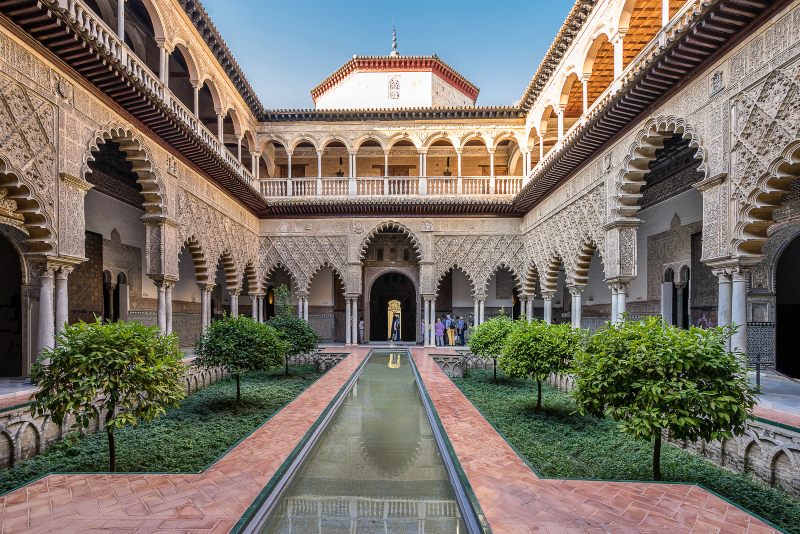
Stay a little while, however, and you will realise that Seville is very much a living, dynamic city. Let the sound of flamenco (for which the region is famous) guide you into charming little bars, where locals and tourists alike are delighted by the beautiful sounds and atmosphere.
Related: 3 days in Seville
Don’t miss
- Real Alcázar, the former Royal Castle and one of Seville’s several UNESCO World Heritage Sites. Game of Thrones might also recognise this landmark.
- The Seville Cathedral, a gothic masterpiece that was built in the 16th century during Seville’s heyday.
- Metropol Parasol, a modern art piece that has provided a juxtaposition to the historic streets since opening in 2011.
Granada
Granada is one of the most charming towns in Andalusia, with a mix of Moorish architecture, great food culture and a strong hippie vibe it draws you under its spell.
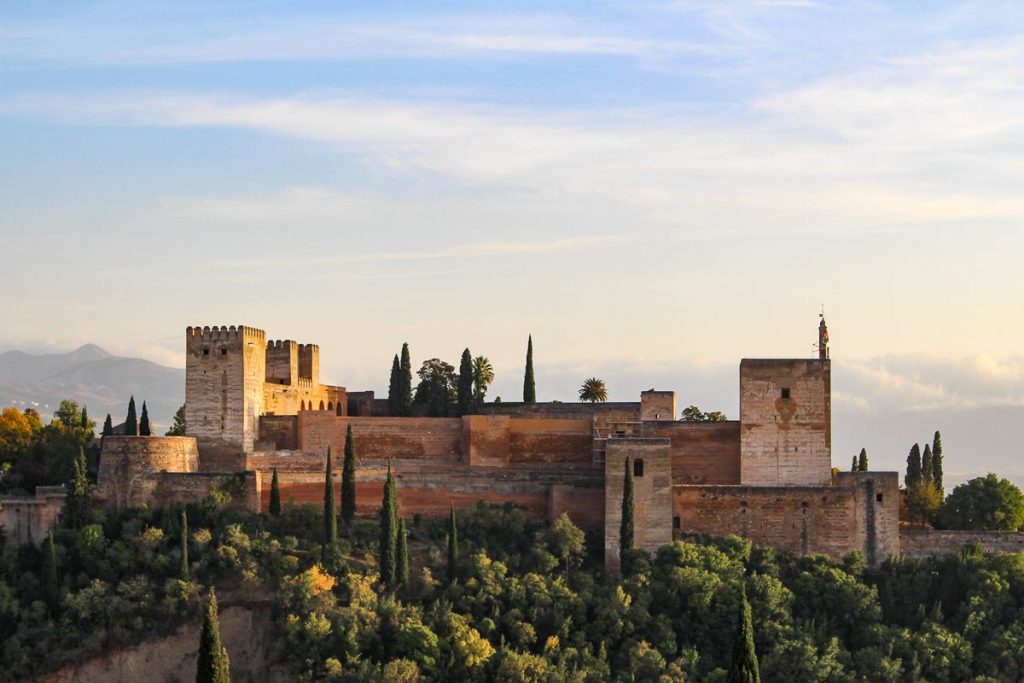
Granada is a university town with over 80k students living here meaning there is always something happening. The city has such a great vibe that just being here wandering the streets and people watching is special. Oh, and they still give decent free tapas everywhere you go!
The Nevada Mountains provide a gorgeous backdrop and the sea is only an hour away providing a landscape that is fertile and so very pretty.
We spent three days in Granada check out our itinerary.
Don’t Miss
- Sunset from Mirador San Nicolas and as many other miradors as you can!
- The Alhambra and Generalife Gardens – book early they are beyond popular
- Albaicin – Wandering the narrow streets allows you to get a great feel for times past.
Malaga
The largest city along Spain’s Costa del Sol, Malaga is a beachside city with plenty of heart. While some destinations may lose their charm with the arrival of resorts and high rises, Malaga has managed to stay true to its artistic roots, while also offering plenty of amenities to sunseekers.
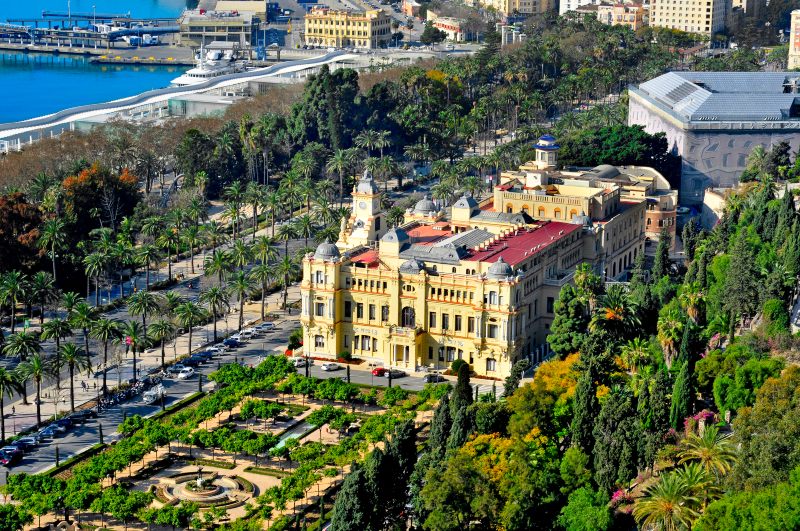
Aside from its glorious beaches, Malaga is most famously the birthplace of Pablo Picasso and has enchanted many other artists. As such, there is an abundance of galleries and museums in the city. Foodies are also sure to delight in visiting Malaga. As a portside city, there’s a focus on seafood – both the humble fish shack variety and that prepared in luxurious Michelin starred restaurants.
Don’t miss
- The Museo Picasso de Malaga (Picasso Museum), which features over 200 works of the surrealist master, who was born in Malaga.
- The Alcazaba, an Islamic-inspired 11th-century fortification that was built on still-visible Roman ruins that date back from the 1st century.
- Visit a beach like the Playa de La Malagueta and find out why it’s called the “Costa de Sol” (Sun Coast)
The Camino
One of the world’s most famous walking trails, ‘The Camino’ – formally known as Camino de Santiago – is described by many as a lifechanging experience. Every year, more than 200,000 people complete the hike, escaping busy everyday life to take in the beauty of the countryside as well as the many stunning sights along the way. It’s an opportunity for contemplation, relaxation and perhaps to meet some fellow hikers.
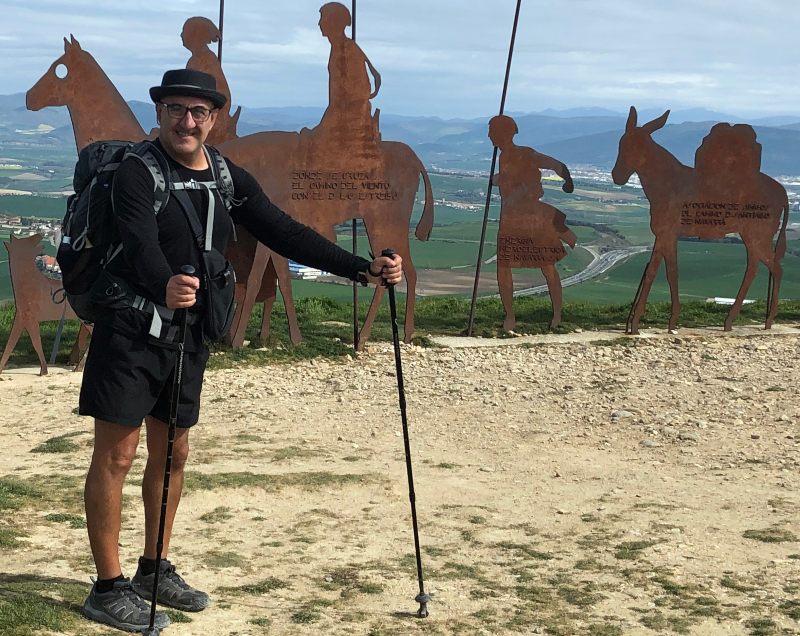
The entire trail is approximately 800 kilometres, however, it can easily be broken up into smaller sections. There are numerous trails, but the most famous through the Pyrenees which separate France and Spain, before snaking through some of Spain’s most beautiful terrain and arriving at the Tomb of St James in northwest Spain.
Don’t miss
- The highlights depend on which route you take – but whichever you choose, the experience is sure to be a magical one.
La Rioja
If you love wine, chances are you have heard of Spain’s La Rioja region. It’s one of the world’s great wine-producing places and a favourite of sommeliers all over the world. Visiting it, however, you may be surprised. Despite its big reputation, it remains humble – with dozens of beautiful family-owned bodegas dotted throughout the rolling hills, as well as larger producers.
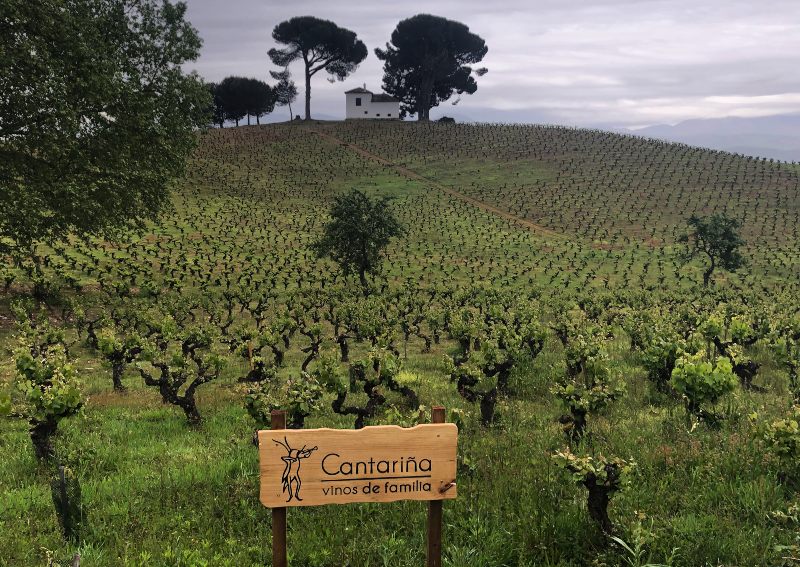
You certainly don’t need to be a wine expert to enjoy a visit to La Rioja. In fact, just exploring the countryside and stopping in for a bite to eat is glorious, although those who love wine will probably not be able to pass up the opportunity for a tasting or two!
Don’t miss
- Museo de la Rioja, which will give you an insight into the region’s history (and is about more than just wine!)
- A wine tour, stopping in at beautiful wineries like Bodegas Ysios and Muga.
San Sebastián
Ok, so we have not yet made it to San Sebastian yet. It was the first Spanish city that made my list yet our timing has not worked out so far.
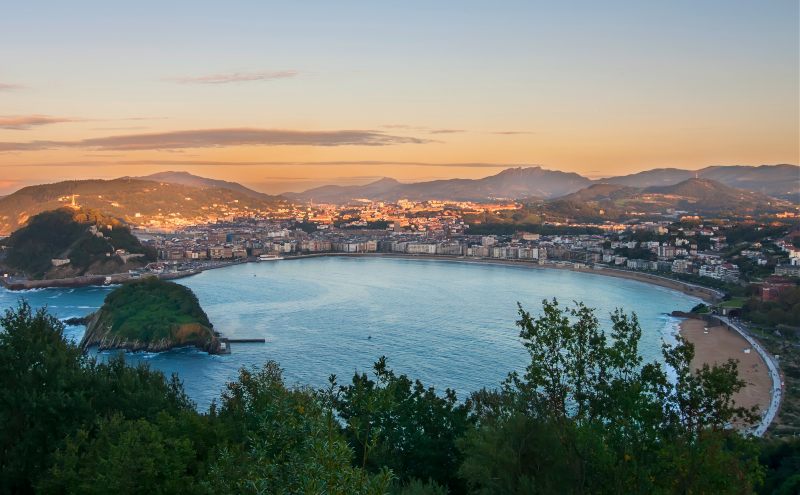
We missed out visiting due to bad timing – do not try to visit during the film festival unless you have buckets of money. Even 6 months out we could not find affordable accommodation. The upside, we have reason to go back to Spain!
Have you been to San Sebastián? Please share your best tips and help us plan our visit.
Save this guide to how to Plan a Trip to Spain to Pinterest
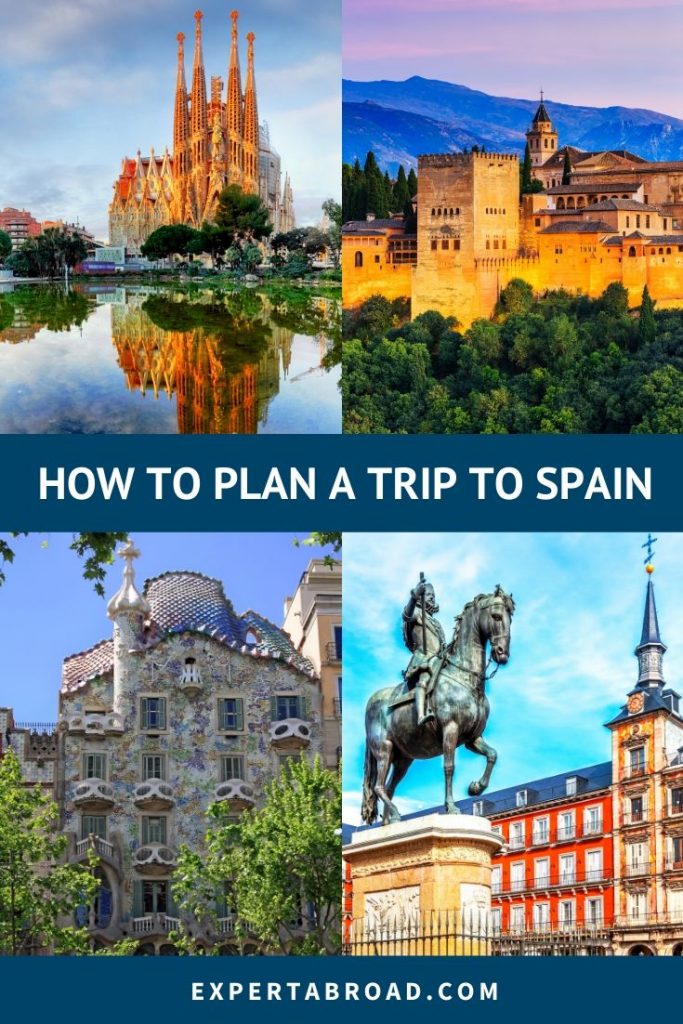

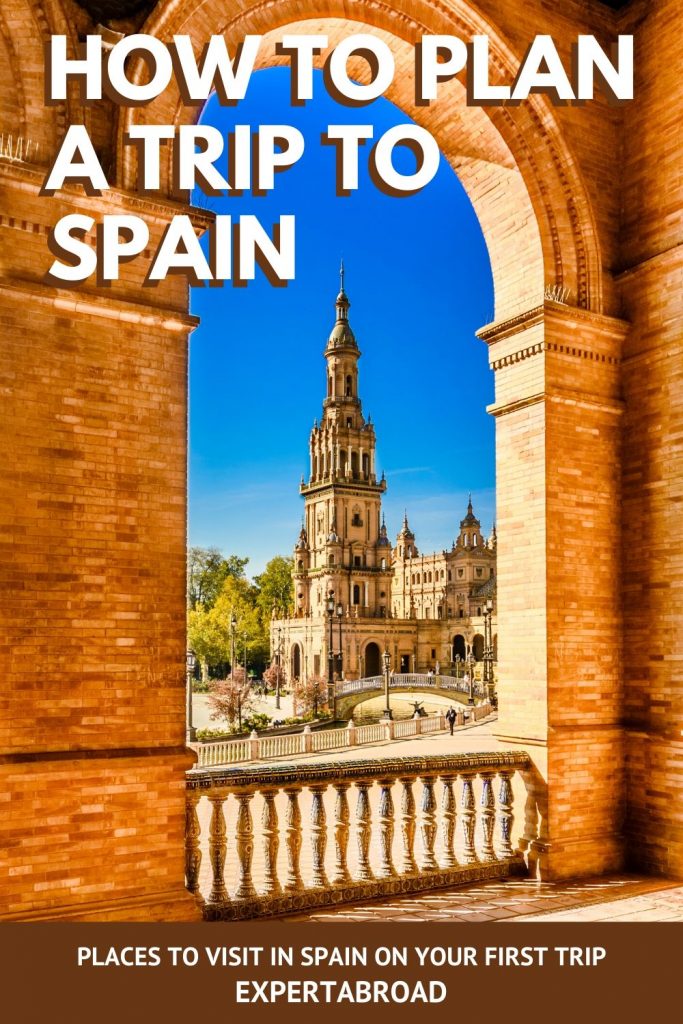
Have a question about something here? Want advice for planning your visit? Head to our Facebook page and we will do our best to help.
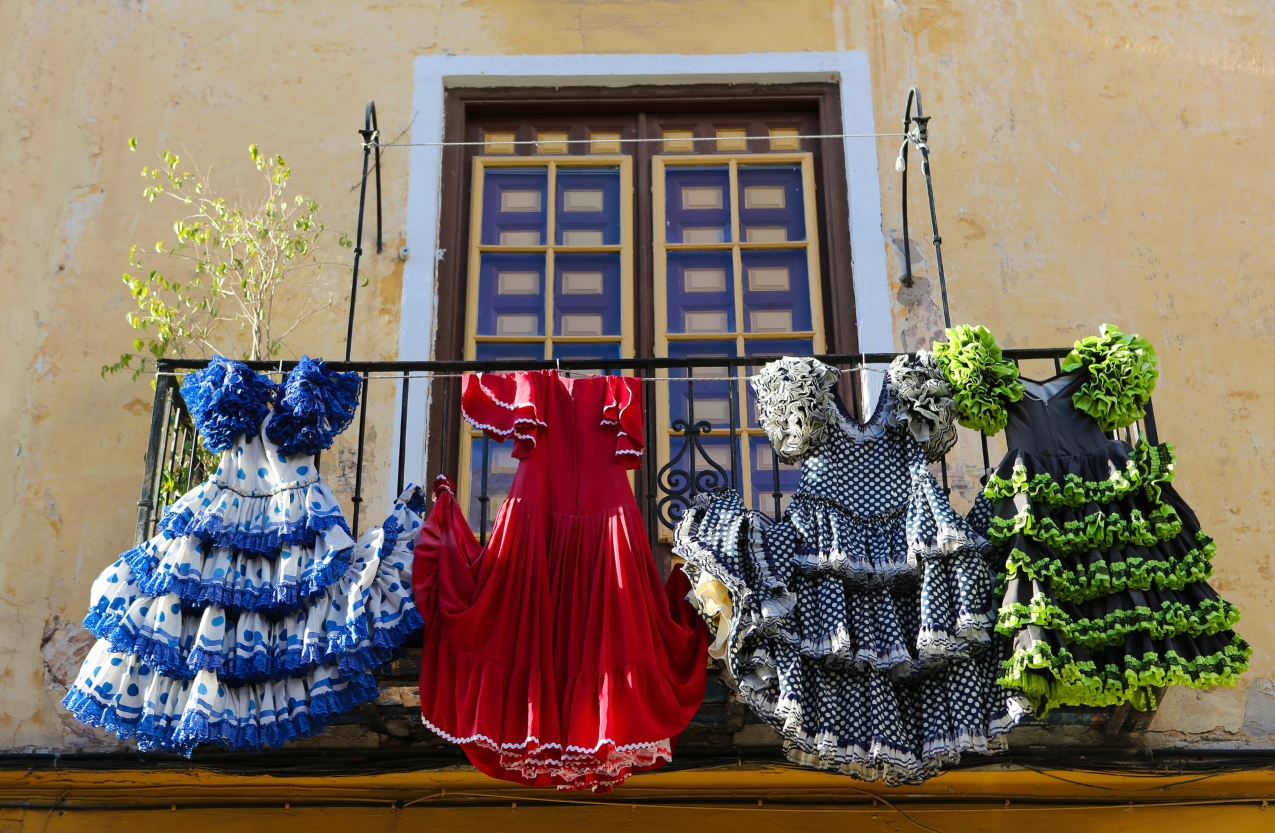



Your article helped me a lot, is there any more related content? Thanks!
BYD Winner – спортивный автомобиль с динамичным дизайном и отличной
Спасибо за информацию о стоматологии в Ташкенте! Уже нашел нужную мне услугу на вашем сайте
Dont buy everything from here
poor high-quality materials<br
I enjoyed this article. Check out for more
This was very enlightening. For more, visit
Dont buy anything at all from listed here
This was very insightful. Check out ##anyKeyword## for more
This was nicely structured. Discover more at
Great insights! Find more at ##anyKeyword##
lousy high-quality support<br
Appreciate the detailed information. For more, visit
This was a great article. Check out ##anyKeyword## for more
Appreciate the thorough information. For more, visit
Dont invest in nearly anything from listed here
Thanks for the helpful article. More like this at
I enjoyed this article. Check out for more
This was quite helpful. For more, visit
negative quality support<br
Tại Tâm Beauty Clinic, chúng tôi xuất bản các nội dung đánh giá, bảng xếp hạng liên quan đến ngành làm đẹp, bao gồm các spa trị mụn, spa làm đẹp, spa dưỡng da,… Mỗi thương hiệu được đưa vào bảng xếp hạng đều trải qua quá trình sàng lọc kỹ lưỡng
Thanks for the comprehensive read. Find more at
Well explained. Discover more at
Bu harika bir makale. Daha fazla bilgi için ‘a göz atın
Great job! Find more at ##anyKeyword##
This was quite informative. More at
Thanks for the thorough analysis. Find more at ##anyKeyword##
This was quite enlightening. Check out ##anyKeyword## for more
¿Qué opinas del mejor concurso SEO: ##anyKeyword##? ¿Estás particip
This was very enlightening. For more, visit ##anyKeyword##
Avage AI: Transforme Sua Estratégia de Trading no Brasil
Avage AI é uma aplicação de trading avançada, projetada especialmente para o mercado brasileiro
Thanks for the useful suggestions. Discover more at ##anyKeyword##
Наизнанку (2015): Отличный анимационный фильм об эмоциях и подростковом возрасте
Great job! Discover more at ##anyKeyword##
I appreciated this post. Check out ##anyKeyword## for more
Great
I needed to thank you for this great read!!
I absolutely enjoyed every bit of it. I’ve got you saved as a favorite to look at new things
you post…
Hello there, just became aware of your blog through Google,
and found that it is really informative. I am gonna watch out for brussels.
I will appreciate if you continue this in future.
A lot of people will be benefited from your writing.
Cheers!
В случае с приветственными фриспинами, которые дают за регистрацию, бесплатные вращения начисляют автоматически.
Hi, all is going nicely here and ofcourse every one is sharing
facts, that’s genuinely excellent, keep up writing.
It’s actually a nice and useful piece of info. I am happy that you just shared this
useful information with us. Please keep us up to date like this.
Thanks for sharing.
If you want to increase your knowledge simply keep visiting this site and be updated with
the latest gossip posted here.
Superb website you have here but I was wanting to know if you knew of any community forums that
cover the same topics discussed here? I’d really like to be a part of group where I can get advice from other experienced people that share the same interest.
If you have any suggestions, please let me know.
Kudos!
all the time i used to read smaller articles or
reviews that also clear their motive, and that is also happening with this article which I am reading at this
place.
I feel this is among the such a lot significant info for me.
And i am satisfied reading your article. But want
to commentary on few basic issues, The site style
is ideal, the articles is in reality excellent : D.
Just right job, cheers
Hey There. I found your blog the usage of msn. This is an extremely neatly
written article. I will make sure to bookmark it and
come back to learn more of your helpful information. Thanks for the post.
I’ll definitely return.
Hello there! I could have sworn I’ve visited this site before but after looking at a few of the
posts I realized it’s new to me. Anyways, I’m definitely happy I discovered it and I’ll be book-marking it and checking back frequently!
My partner and I absolutely love your blog and find the majority of your post’s to be
precisely what I’m looking for. Do you offer guest writers to
write content to suit your needs? I wouldn’t mind producing a
post or elaborating on most of the subjects you write with regards to here.
Again, awesome web site!
Write more, thats all I have to say. Literally,
it seems as though you relied on the video
to make your point. You definitely know what youre talking about, why throw away your intelligence on just posting
videos to your weblog when you could be giving us something informative to read?
Have you ever thought about publishing an ebook or guest authoring
on other websites? I have a blog centered on the same topics you discuss and would love to have
you share some stories/information. I know
my visitors would appreciate your work. If you’re even remotely
interested, feel free to shoot me an e-mail.
As the admin of this website is working, no hesitation very quickly it will be well-known, due to its quality contents.
you are in reality a good webmaster. The web site loading speed is incredible.
It sort of feels that you’re doing any unique trick. Furthermore, The contents are masterwork.
you have performed a great job in this subject!
Hello, its fastidious paragraph regarding media print, we all know
media is a enormous source of data.
Hiya! Quick question that’s completely off topic.
Do you know how to make your site mobile friendly?
My weblog looks weird when viewing from my iphone. I’m
trying to find a template or plugin that might be able to correct this problem.
If you have any suggestions, please share. Cheers!
If you desire to grow your experience just keep visiting this web
page and be updated with the latest news posted here.
I don’t even know how I ended up here, but I thought this post was good.
I do not know who you are but definitely you are
going to a famous blogger if you aren’t already 😉 Cheers!
Hi there, I wish for to subscribe for this website to take latest updates, therefore where can i do it please assist.
I blog frequently and I truly thank you for your information. This great article has really peaked my
interest. I’m going to bookmark your website and
keep checking for new information about once a week.
I opted in for your Feed too.
continuously i used to read smaller posts that as well clear their motive, and that is also happening with this piece of writing which I am reading at this place.
Wow, awesome blog layout! How long have you been blogging
for? you make blogging look easy. The overall look of
your web site is excellent, as well as the content!
Hey! Quick question that’s entirely off topic. Do you know how to make your site mobile friendly?
My blog looks weird when viewing from my iphone4.
I’m trying to find a theme or plugin that might be able to correct this
issue. If you have any recommendations,
please share. Thanks!
Wow, this article is nice, my sister is analyzing these kinds of things, thus I am going
to inform her.
A motivating discussion is definitely worth comment. I think that you should write more on this topic, it might not be
a taboo subject but generally people don’t discuss these subjects.
To the next! Best wishes!!
Good response in return of this matter with firm arguments and telling everything concerning that.
I was excited to discover this website. I need to to
thank you for your time for this particularly fantastic read!!
I definitely liked every bit of it and i also have you book marked to check out new things in your website.
Its like you read my mind! You appear to know
so much about this, like you wrote the book in it or something.
I think that you can do with a few pics to drive the message home a bit, but instead of that,
this is fantastic blog. A great read. I’ll certainly
be back.
I really like it when people come together and share ideas.
Great website, keep it up!
Excellent article. Keep writing such kind of
info on your site. Im really impressed by your site.
Hi there, You’ve performed an incredible job. I will definitely digg it and in my opinion suggest to my friends.
I’m confident they will be benefited from this web site.
Fascinating blog! Is your theme custom made or did you download it from somewhere?
A theme like yours with a few simple adjustements would really make my blog jump out.
Please let me know where you got your design. Many thanks
Hi, i believe that i noticed you visited my site so i came to return the want?.I
am trying to find things to enhance my web site!I suppose
its good enough to make use of a few of your ideas!!
Really when someone doesn’t know then its up
to other users that they will assist, so here it happens.
It’s wonderful that you are getting ideas from this paragraph as
well as from our dialogue made here.
Quality articles or reviews is the secret to interest
the visitors to pay a quick visit the web site, that’s what this
website is providing.
Pretty! This has been a really wonderful article. Thanks for providing these
details.
Can I just say what a relief to find someone who genuinely knows what
they’re discussing on the internet. You actually understand how to bring a problem to light
and make it important. More people have to check
this out and understand this side of the story.
I was surprised that you’re not more popular given that you definitely have the gift.
Переоценить портативные гаджеты невозможно, ведь благодаря мобильному интернету пользователям открылись широкие возможности.
Второй шаг – заказ хостинга из предлагаемых тарифных планов.
You are so cool! I do not believe I have read something like this before.
So nice to find another person with some unique thoughts on this subject.
Seriously.. many thanks for starting this up. This web site is
something that is required on the internet, someone with a bit of originality!
Greetings, I do think your blog might be having browser compatibility issues.
When I look at your blog in Safari, it looks fine however, when opening in Internet Explorer,
it has some overlapping issues. I simply wanted to provide you
with a quick heads up! Aside from that, fantastic blog!
Wow! In the end I got a blog from where I know how to actually obtain helpful
information concerning my study and knowledge.
Please let me know if you’re looking for a article writer for your
site. You have some really good posts and I believe I would
be a good asset. If you ever want to take some of the load off, I’d absolutely love to
write some content for your blog in exchange for a link back to mine.
Please send me an e-mail if interested. Many thanks!
Great blog here! Additionally your site rather a lot up fast!
What host are you using? Can I get your associate
hyperlink in your host? I desire my site loaded up as quickly as yours lol
No matter if some one searches for his essential thing, therefore he/she wishes to be available
that in detail, so that thing is maintained over here.
Greetings I am so glad I found your site, I really found you by accident,
while I was researching on Yahoo for something
else, Anyhow I am here now and would just like to say cheers for a tremendous post
and a all round entertaining blog (I also love the theme/design), I
don’t have time to read through it all at the moment but
I have bookmarked it and also added in your RSS feeds,
so when I have time I will be back to read a lot more, Please
do keep up the awesome work.
Hey there are using WordPress for your blog platform?
I’m new to the blog world but I’m trying to get started and create my own. Do you need any html coding expertise to make your own blog?
Any help would be really appreciated!
Good post! We are linking to this particularly
great content on our website. Keep up the good writing.
Thanks for sharing your thoughts. I really appreciate your
efforts and I am waiting for your next post thanks once again.
I’ve been surfing online more than 3 hours today,
yet I never found any interesting article like yours. It’s pretty worth enough for me.
In my opinion, if all web owners and bloggers made good content
as you did, the web will be a lot more useful than ever before.
I’ve been browsing online more than 3 hours today, yet I never found any interesting article like yours.
It’s pretty worth enough for me. In my opinion, if all website owners and bloggers made good content as you did, the web will be much more useful than ever before.
Нравится, что тут можно получать бонусы за репосты и выполнение заданий.
Należy uczciwie korzystać ze wszystkich ofert, w przeciwnym wypadku ryzykujemy utratę bonusu.
Heya i’m for the first time here. I came across this board and I find
It truly useful & it helped me out a lot. I hope to give
something back and help others like you helped me.
Quality posts is the crucial to be a focus for the people to go to see the web page, that’s what
this site is providing.
What’s up i am kavin, its my first occasion to commenting anyplace,
when i read this article i thought i could also
make comment due to this good paragraph.
great issues altogether, you simply won a emblem new reader.
What might you recommend in regards to your publish that you
just made some days ago? Any certain?
This is very interesting, You’re a very skilled blogger. I have joined your feed and look forward
to seeking more of your wonderful post. Also, I’ve shared your site in my social networks!
Why users still make use of to read news papers when in this
technological world everything is available on web?
It’s truly very difficult in this busy life to listen news on TV, thus I only use
the web for that reason, and obtain the most recent news.
I have been browsing on-line greater than three hours nowadays, yet I never found any fascinating article like yours.
It’s pretty price sufficient for me. In my opinion, if all webmasters and bloggers made good content as
you did, the internet will be much more useful than ever before.
We absolutely love your blog and find many of your post’s to
be what precisely I’m looking for. Do you offer guest writers to write content to suit your needs?
I wouldn’t mind writing a post or elaborating on most of the subjects you write concerning here.
Again, awesome weblog!
Hi there I am so excited I found your web site, I
really found you by accident, while I was looking on Aol for something else,
Regardless I am here now and would just like to say thanks a lot for a tremendous post and a all round thrilling blog (I also love the theme/design), I don’t have time to browse it all
at the moment but I have saved it and also included your
RSS feeds, so when I have time I will be back to read a lot more,
Please do keep up the awesome b.
Write more, thats all I have to say. Literally, it seems as though you relied on the video
to make your point. You clearly know what youre talking about, why
waste your intelligence on just posting videos to your site
when you could be giving us something enlightening to read?
Hey, I think your website might be having
browser compatibility issues. When I look at your blog site in Firefox,
it looks fine but when opening in Internet Explorer, it has some overlapping.
I just wanted to give you a quick heads up! Other then that, very good
blog!
I’ve been browsing online more than 3 hours today, yet I never found any interesting article like yours.
It is pretty worth enough for me. Personally, if all website owners and bloggers made good content as you did, the internet will be much more useful than ever before.
Thanks , I’ve recently been searching for information approximately this topic
for a long time and yours is the greatest I’ve came upon so far.
However, what in regards to the bottom line? Are you sure concerning the
supply?
Heya! I’m at work browsing your blog from my new iphone 4!
Just wanted to say I love reading your blog and look forward to all your posts!
Keep up the fantastic work!
This website was… how do I say it? Relevant!! Finally I have found
something that helped me. Cheers!
Your mode of telling everything in this paragraph is genuinely fastidious, every one be able to simply be aware of it, Thanks a
lot.
Its like you read my mind! You seem to know so much about this, like you
wrote the book in it or something. I think that
you could do with some pics to drive the message home
a bit, but other than that, this is great blog. A fantastic
read. I will definitely be back.
I like the valuable information you provide on your articles.
I will bookmark your blog and take a look at again here regularly.
I’m rather certain I will learn a lot of new stuff proper
here! Good luck for the next!
Greetings! I know this is kind of off topic but I was wondering
which blog platform are you using for this site? I’m getting fed up of WordPress because I’ve had problems
with hackers and I’m looking at options for another platform.
I would be fantastic if you could point me in the direction of a good platform.
I was recommended this blog by my cousin. I’m not sure whether this post is written by him as nobody else know
such detailed about my trouble. You’re incredible! Thanks!
If some one needs expert view concerning running a blog
after that i recommend him/her to visit this website, Keep up the fastidious job.
Excellent weblog here! Also your website quite a bit
up very fast! What web host are you the use of?
Can I get your associate link on your host? I want my website loaded up
as quickly as yours lol
I don’t even know how I stopped up here, however I assumed this put up used to be good.
I don’t realize who you might be however definitely
you’re going to a famous blogger for those who aren’t already.
Cheers!
Und selbst den Versuch, das Image von El Salvador zu verändern,
sieht Ökonomin Marroquin als Fehlschlag.
I will immediately take hold of your rss feed as I can not to find
your email subscription link or e-newsletter service. Do you have any?
Please let me recognize in order that I
may just subscribe. Thanks.
Today, I went to the beachfront with my children.
I found a sea shell and gave it to my 4 year old daughter and
said “You can hear the ocean if you put this to your ear.” She put the shell to her ear and screamed.
There was a hermit crab inside and it pinched her ear. She never wants to go back!
LoL I know this is completely off topic but I had to tell someone!
This is really interesting, You are a very skilled blogger.
I’ve joined your feed and look forward to seeking more of
your magnificent post. Also, I have shared your site in my social networks!
Pretty! This has been a really wonderful post. Thank you for
providing this information.
I loved as much as you’ll receive carried out
right here. The sketch is attractive, your authored material stylish.
nonetheless, you command get got an impatience over that you wish be delivering the following.
unwell unquestionably come more formerly again since
exactly the same nearly a lot often inside case you shield this hike.
Hello there, just became aware of your blog through Google, and found that it’s really informative.
I am going to watch out for brussels. I’ll be grateful
if you continue this in future. Lots of people will be benefited from your writing.
Cheers!
Right now it appears like Expression Engine is the best blogging platform out there right now.
(from what I’ve read) Is that what you’re using
on your blog?
Hello there, just became alert to your blog through Google,
and found that it is really informative. I am
going to watch out for brussels. I’ll appreciate if you continue this in future.
Many people will be benefited from your writing. Cheers!
I’d like to find out more? I’d love to find out some additional
information.
We are a group of volunteers and opening a new scheme in our community.
Your site provided us with valuable info to work on. You’ve done a formidable job and our entire community will be thankful
to you.
This text is priceless. When can I find out more?
Asking questions are genuinely good thing if you
are not understanding something totally, however this article gives nice understanding yet.
Fantastic site you have here but I was curious about if you
knew of any community forums that cover the same topics talked about here?
I’d really like to be a part of community where I can get feedback from other experienced individuals
that share the same interest. If you have any recommendations,
please let me know. Many thanks!
I am really pleased to read this blog posts which carries tons of useful information, thanks for
providing these kinds of statistics.
WOW just what I was searching for. Came here by searching
for website
Pretty part of content. I just stumbled upon your website
and in accession capital to claim that I acquire in fact
loved account your blog posts. Any way I will be subscribing
on your augment and even I fulfillment you get right of entry
to consistently quickly.
Hi colleagues, how is all, and what you would like to say on the topic of
this paragraph, in my view its genuinely amazing in support of me.
It’s appropriate time to make some plans for the future and
it is time to be happy. I have read this post and if I could I desire to suggest
you few interesting things or tips. Perhaps you can write next articles referring to this article.
I want to read more things about it!
Very good post. I’m facing some of these issues
as well..
We stumbled over here from a different web address and
thought I might as well check things out. I like what I see so now i’m following you.
Look forward to looking at your web page again.
After I originally left a comment I seem to have clicked on the -Notify me when new comments are
added- checkbox and from now on every time a comment is
added I recieve four emails with the exact same comment.
There has to be a way you can remove me from that service?
Kudos!
Link exchange is nothing else but it is only placing the other person’s web site link on your page at appropriate place and other person will also do same in favor of you.
I’ve learn a few excellent stuff here. Definitely value bookmarking for revisiting.
I wonder how so much attempt you put to make such a wonderful
informative website.
I every time emailed this website post page to all my associates, because if like to read it then my friends
will too.
Wonderful, what a website it is! This weblog gives useful facts to us, keep it up.
Way cool! Some very valid points! I appreciate you penning this post and the rest of the website is also very good.
I’m truly enjoying the design and layout of your blog.
It’s a very easy on the eyes which makes it much more pleasant for me to come here and visit more often.
Did you hire out a developer to create your theme? Excellent work!
Heya i’m for the first time here. I came across this board and I find It really helpful & it helped me out a lot.
I’m hoping to present one thing again and aid others like you helped me.
Your article helped me a lot, is there any more related content? Thanks!
Can you be more specific about the content of your article? After reading it, I still have some doubts. Hope you can help me.
Absolutely incredible post. Well written and wonderful photos! Thank you.
We spent almost 4 months in Spain in the last 24 month so that gave us time to get a good handle on the costs.
San Sebastian is not on my list but I didn’t make it to Madrid, Barcelona, and the Camino yet! I am trying to get there plus Portugal on my next trip. But, Seville, Malaga, and Granada, yes1!!
Nice summary on key places to visit in Spain. We’re passing through Madrid in the coming months on the way to other countries and will be spending a night or two … so your tips will come in very useful.
I spent 8 days in Barcelona and loved it! We hiked a bit of the Camino and it is stunning landscape. I agree there is so much of this great country to explore and I would love to return and explore more. I loved how you highlighted some of the key destinations and what not to miss! This serves as a great reference for those planning on touring this country.
What an easy to read, helpful guide! Yes, Spain IS on my list of must-visit places – especially Barcelona and Seville! Definitely saving this for whenever I finally get there.
I totally agree with you on all the tips and guide given by you for Spain. I too felt that Spain has great architecture, enthusiastic people, lovely food and culture which amazes all tourists. I did all of the cities mentioned by you except San Sebastain, Camino and The Rioja. I feel like going to Spain again.
This is a great guide for first time travelers who are overwhelmed with all the options to see in Spain. I have always wanted to do Camino de Santiago. It’s the first time I’ve heard of La Rioja and looks like it’s the kind of place I would enjoy visiting.
Really useful tips for planning the first trip to Spain. Being a budget traveler, I’m curious how you researched all those travel costs. Did you ask locals?
I would love to do a train trip with Europe with the kids and Spain would definitely be on the top of the list. Especially Seville, Granada, Barcelona & Madrid. Spain always seems to feature on the favourite’s list when people return from Europe trips.
Your photos are absolutely stunning by the way.
Great post! I LOVED my trip to Spain with my Mum last year and we are already trying to plan a trip back – so this was super helpful! I am also dying to walk a part of the Camino soon! Lovely!
Very helpful. We need to see a lot more of Spain so will be bookmarking this for a rainy ( well, hopefully sunny) day.
Spain has been calling for some time now. I mean, eating at the world’s oldest restaurant for your 50th birthday is really something. It’s good to know that getting a car is reasonable. I was a bit hesitant about driving in Spain after I heard stories of driving in Italy.
We have only visited Barcelona. Spain has so much to offer and each region is so unique. Would love to see the rest of Spain one day, especially the South. 😊
Thank you for all of this great information on Spain. I’ve only ever been to Barcelona and it was so lovely! I definitely need to go back soon.
We were in Spain back in April. We loved it. We were in Seville at Easter. wow…